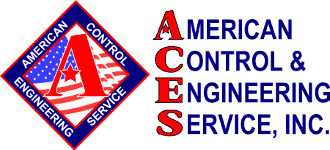THE MYSTERY
A packaging manufacturing company called ACES as one of their paper machines had broken two felts in short order. The felt is a strip that carries the paper pulp, threading it through a long and complex series of rollers to squeeze out the water. The control system for this particular machine included two Yaskawa G7 VFDs, one Avtron VFD and an Avtron ADDvantage controller. When they’re perfectly synchronized this system maintains an intricate balance between torque, tension and speed.
THE CLUES
The customer suspected that the encoder on one of the line shaft gearboxes was putting out an erroneous signal. But further investigation proved that the encoder was providing accurate data.
The ACES CSI (Control Systems Inspector) observed the machine in action and ascertained that the motor-to-gearbox coupling on the primary helper drive was slipping for a split second, approximately every 2 minutes and 40 seconds.
In addition, the roll diameter of this drive had been changed without altering the “torque value” in the Avtron VFD that was running the drive.
THE PERP
The CSI adjusted the torque value in the drive and replaced the loose coupling. With these two items accomplished and the machine producing paper for more than 30 minutes, the CSI left the premises satisfied that the machine was back on track.
ANOTHER MYSTERY
The next morning the client phoned ACES with the surprising news that the machine had destroyed a third felt.
The customer asked ACES to monitor the analog signals coming to the drives and also the pulsed signal from the line shaft gearbox encoder. The CSI built new cables onsite and downloaded Yaskawa Drive Wizard Industrial software with which to monitor the drives. At the customer’s request he installed a new Yaskawa G7 VFD to replace the Avtron VFD.
He then re-coupled the motors to the drives, started the machine without a felt and brought the main roller up to 63 FPM. He adjusted the speed reference inputs until all three helper drives were following the main roller. But when he accelerated the main roller to 300 FPM the helper drives only rose to 120-130 FPM.
THE PERP
The CSI deduced that the analog signal being output by the Avtron ADDvantage controller was not linear to the encoder signal coming to it — the Avtron controller was both obsolete and malfunctioning.
THE SOLUTION
ACES recommended replacing the Avtron controller with an Allen Bradley ControlLogix L61 processor, complete with high-speed counter, discrete inputs/outputs and analog outputs.
After installing the new processor the CSI programmed the PLC code with a formula for calculating the appropriate speed reference for each drive, based on the current main roller speed.
Once testing was complete, the operators replaced the felt on the machine and the CSI monitored the drives while the machine was fired up.
He made several adjustments to the torque reference and acceleration time.
In consultation with Yaskawa Tech support, he set the primary helper drive to “speed search” so that it could find and match the speed of the already turning primary helper roll, and he switched the stopping method to “coast to stop.”
With the new Allen Bradley processor controlling tension, torque and speed, the felt flows through the rollers smoothly and in one piece — and the customer’s paper products are now flowing smoothly out the door.
To prevent further incidents, ACES is planning updates to the control system:
- Install DeviceNet communications between the VFDs and the PLC to eliminate noise on analog signals and to monitor multiple drive parameters
- Connect an HMI to the machine to allow operators to easily enter roll diameters when rolls are changed
- Add Ethernet communications for the VFDs to enable trending of data and remote troubleshooting
